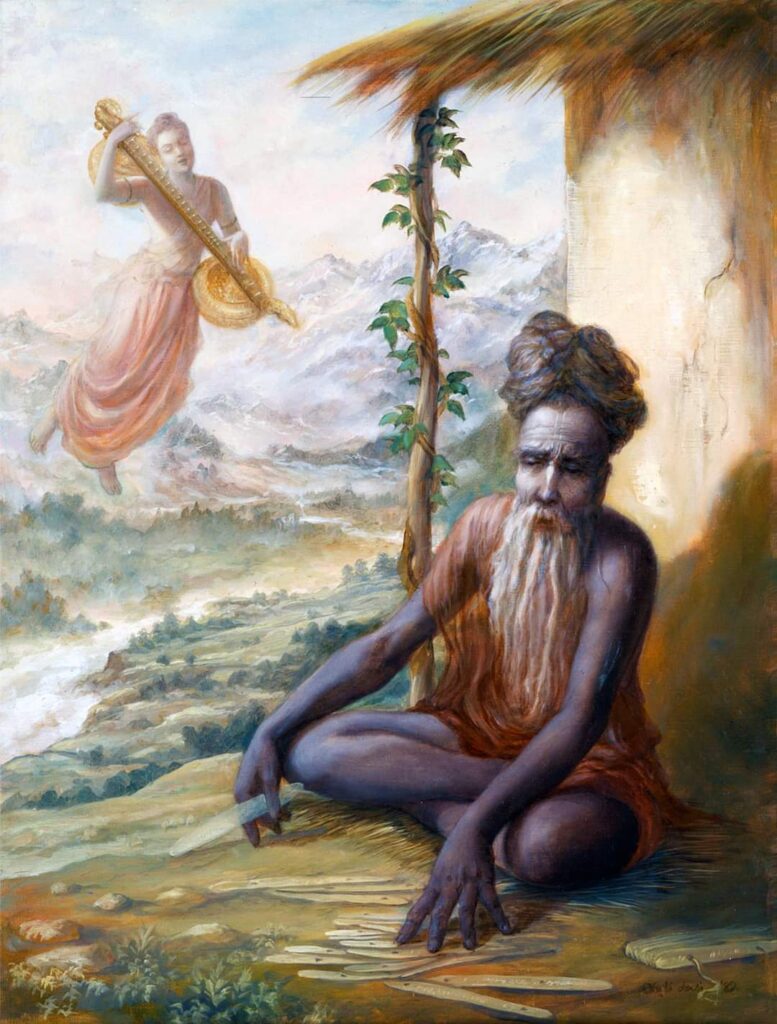In the first canto of Srimad Bhagavatam, there is a verse that we may have a little trouble explaining:
“Sūta Gosvāmī said: When the second millennium overlapped the third, the great sage [Vyāsadeva] was born to Parāśara in the womb of Satyavatī, the daughter of Vasu.” (SB 1.4.14)
Prabhupada mentions in the purport:
“There is a chronological order of the four millenniums, namely Satya, Dvāpara, Tretā and Kali. But sometimes there is overlapping. During the regime of Vaivasvata Manu, there was an overlapping of the twenty-eighth round of the four millenniums, and the third millennium appeared prior to the second. In that particular millennium, Lord Śrī Kṛṣṇa also descends, and because of this there was some particular alteration.”

Just in case you are wondering, the literal translation of the verse is:
“Coming in the second millennium (Dvāpara-yuga), at the time the third (Treta-yuga) appeared before it, he (Vyasa) was begotten by the great sage Parāśara in the womb of the daughter of Vasu. He is the plenary portion of the Personality of Godhead.”
The literal meaning gives the same idea Prabhupada gives in his purport. Vyasadeva appeared at the end of Dwapara-yuga, the same millennium when Krsna also appeared, therefore the verse does not make sense if interpreted differently.
Time on our planet is divided into four eras.
* The first lasts for 1,728,000 years and the process of self-realization is meditation.
* The second lasts 1,296,000 years and the process is fire sacrifices.
* The third lasts for 864,000 years and the dharma is elaborate temple worship.
* The fourth lasts for 432,000 years, and the process is to chant the holy names.
In most references, we find the order of the yugas mentioned as Satya, Treta, Dwapara, and Kali. The process of self-realization for Treta-yuga is mentioned as fire sacrifices and for Dwapara-yuga is mentioned as temple worship. That’s what Srila Prabhupada mentions in his books most of the time, and how we usually learn.
However, there are a few references, like this one, mentioning that actually, the usual order is Satya, Dwapara, Treta, and Kali, and sometimes (once in a day of Brahma, when Krsna appears, Lord Krsna appears) the order is changed to Satya, Treta, Dwapara, and Kali. How does it work?
Everyone agrees that Satya-Yuga lasts for 1,728,000 years and the process for self-realization is meditation, up to here there is nothing to be confused about. The confusing part is that this verse mentions that normally the next is Dwapara-Yuga (and not Treta), which lasts for 1,296,000 years and where the process of self-realization is fire sacrifices. The third is then Treta-Yuga, which lasts for 864,000 years and where the process of self-realization is temple worship, and finally, Kali-Yuga, where the process is the chanting of the holy names.
However, in the special Divya-Yuga when Krsna appears (the one we are in) the order changes and the order becomes Satya, Tretā, Dvāpara, and Kali. In this particular Divya-Yuga, the order of the yugas is switched. Treta-Yuga comes first, and Dwapara-Yuga comes after it.
In other words, in this special Divya-Yuga, Treta-Yuga becomes the second age and lasts for 1,296,000 years, and Dwapara-Yuga becomes the third and lasts for 864,000 years.
According to this purport by Srila Prabhupada, it appears that most of the references from the scriptures mention the order of the eras as Satya, Tretā, Dvāpara, and Kali just because that’s what is current for us, having happened in this way in the current divya-yuga we are living in, while the passages that mention the order as being Satya, Dvāpara, Tretā and Kali mention the general order of the ages in other divya-yugas.
Nominally, the dharma for Treta-Yuga is fire sacrifices, and for Dwapara-yuga is temple worship, following the normal sequence for the three ages, but we can see that in practice people were doing a lot of fire sacrifices in the last Dwapara-yuga. We can see that during the whole Mahabharata the Pandavas and others are doing fire sacrifices. Temple worship is mentioned just in a few passages (like in the marriage ceremony of Rukmini), and not as something very central. In this way, it appears that together with the overlap of the eras, there is also some overlap in the religious duties practiced in both millenniums.
Why do these changes happen? It appears that the ultimate reason is to facilitate Krsna’s pastimes, since He comes in the age of the Ksatriyas to annihilate the demons and protect the devotees. In the normal course of Yugas, the age of the Ksatriyas would come earlier, right after Satya-Yuga, and the next age would be an age where people would do temple worship. Both eras would be relatively peaceful since there would be powerful Ksatriyas in Dwapara-Yuga, but they would be virtuous, and in Treta-Yuga when people would have more vices there would not be powerful Ksatriyas anymore and thus not so many conflicts.
However, when Krsna comes the order is switched, and we have the explosive combination of the vices of the third age combined with the presence of powerful Ksatriyas, setting the stage for all the conflicts that Krsna uses it as a pretext for His pastimes involving the Pandavas, the battle of Kuruksetra, and so on.
This is an obscure detail mentioned in the Puranas. It doesn’t make much of a difference in practice, but since it’s mentioned in the verse we are studying it, so there is no doubt.
